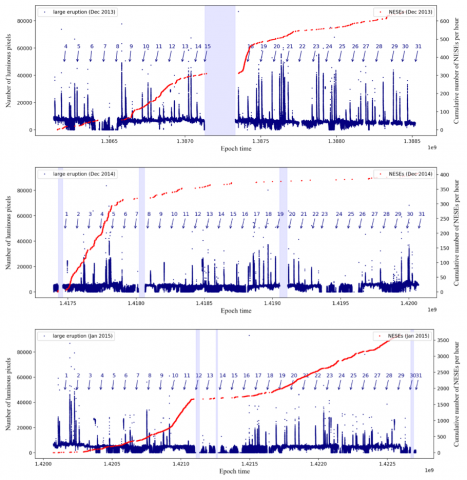Graduate student Leila Honarbakhsh co-authors paper on machine-learning-based analysis of multiple eruptions of the Erebus volcano
Sat, 07/01/2023 - 2:36amErebus, Antarctica, is the southernmost volcano on Earth and has been continuously active for at least the past 50 years. While a permanent observatory is not present, millions of infrared images of its lava lake have been captured between 2013 and 2016 but never fully analyzed to find information on the inner working of the volcano. Physics PhD student Leila Honarbakhsh and her advisor Gabriele Morra, have developed a new machine learning algorithm to analyze the images. Focusing on the months with clearer images, December 2013, December 2014, and January 2015, in each month they detected tens explosive eruptions and hundreds to thousands small non-explosive eruption (NESEs), for a total of 4700 NESEs. The time distribution of the NESEs remarkably shows regimes characterized by regular degassing, sharply changing into a new regime with very different rate, as shown in the image below.

